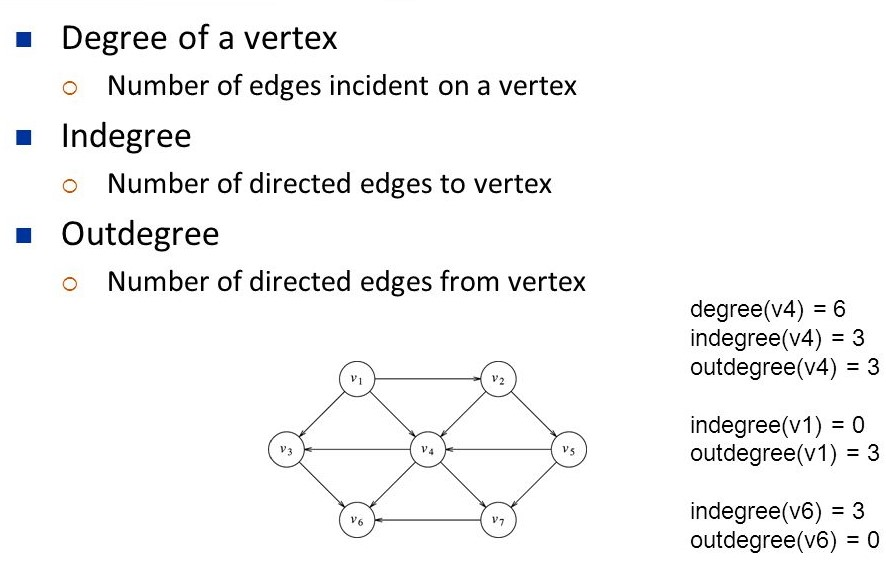Question
import java.util.ArrayList; public class GraphAsLists { private int numberOfVertices; private int numberOfEdges; private Vertex vertex[]; private DLL adjacencyList[]; private boolean isDirected; public GraphAsLists(int size, boolean
import java.util.ArrayList;
public class GraphAsLists {
private int numberOfVertices;
private int numberOfEdges;
private Vertex vertex[];
private DLL
private boolean isDirected;
public GraphAsLists(int size, boolean directed) {
isDirected = directed;
vertex = new Vertex[size];
adjacencyList = new DLL[size];
for(int v = 0; v
adjacencyList[v] = new DLL
}
public GraphAsLists(int size) {
this(size, false);
}
//Begining of Vertex class as inner class
protected class Vertex {
protected int ID;
protected Object weight;
public Vertex(int v, Object wt) {
ID = v;
weight = wt;
}
public Vertex(int v) {
this(v, null);
}
public int getID() {
return ID;
}
public Object getWeight() {
return weight;
}
public boolean equals (Object obj) {
Vertex other = (Vertex) obj;
return ID == other.ID;
}
public Edge[] getIncidentEdges() {
return GraphAsLists.this.getIncidentEdges(ID);
}
public Edge[] getEmanatingEdges() {
return GraphAsLists.this.getEmanatingEdges(ID);
}
public Vertex[] getPredecessors() {
Edge[] incidents = getIncidentEdges();
if (incidents != null) {
int countOfIncidents = incidents.length;
Vertex[] preds = new Vertex[countOfIncidents];
for (int i=0; i preds[i] = incidents[i].getMate(this); return preds; } else return null; } public Vertex[] getSuccessors() { Edge[] emanatings = getEmanatingEdges(); if (emanatings != null) { int countOfEmanatings = emanatings.length; Vertex[] succs = new Vertex[countOfEmanatings]; for (int i=0; i succs[i] = emanatings[i].getMate(this); return succs; } else return null; } public String toString() { String s = "V{" + ID; if(weight != null) s+=", " + weight; s+="}"; return s; } } //End of Vertex class //Begining of Edge class as an inner class protected class Edge { protected int v0; protected int v1; protected Object weight; public Edge(int v, int w, Object obj) { v0 = v; v1 = w; weight = obj; } public Edge(int v, int w) { this(v, w, null); } public Vertex getV0() { return vertex[v0]; } public Vertex getV1() { return vertex[v1]; } public Object getWeight() { return weight; } public Vertex getMate(Vertex v) { if(v.getID() == v0) return vertex[v1]; if(v.getID() == v1) return vertex[v0]; else return null; //invalid argument; better to throw exception here } public boolean isDirected() { //edge is directed if its graph is directed return GraphAsLists.this.isDirected(); } public boolean equals (Object obj) { Edge other = (Edge) obj; return v0 == other.v0 && v1 == other.v1; } public String toString() { String s = "E{" + v0; if(isDirected()) s+="->" + v1; else s+="--" + v1; if(weight != null) s+=", " + weight; s+="}"; return s; } } //end of the Edge class //Begining of Graph methods public int getNumberOfVertices() { return numberOfVertices; } public int getNumberOfEdges() { return numberOfEdges; } public boolean isDirected() { return isDirected; } public void visit(Vertex v) { System.out.print(v+ " "); } public void addEdge(int v0, int v1, Object wt) { adjacencyList[v0].addToTail(new Edge(v0, v1, wt)); numberOfEdges++; } public void addEdge(int v0, int v1) { addEdge(v0, v1, null); } public Edge getEdge(int v0, int v1) { if(v0 numberOfVertices - 1 || v1 numberOfVertices - 1) return null; //invalid edge; Object element = adjacencyList[v0].find(new Edge(v0, v1)); if (element != null) return (Edge) element; else return null; } public void addVertex(Object wt) { //Note: ID of vertex is auto generated: 0, 1, 2, ... vertex[numberOfVertices] = new Vertex(numberOfVertices, wt); numberOfVertices++; } public void addVertex() { addVertex(null); } public Vertex getVertex(int v) { if(v numberOfVertices - 1) return null; else return vertex[v]; } public Vertex[] getVertices() { return vertex; } public Edge[] getEmanatingEdges(int v0) { return adjacencyList[v0].toArray(new Edge[0]); } public Edge[] getIncidentEdges(int v1) { DLL for (int v0 = 0; v0 Edge edge = adjacencyList[v0].find(new Edge(v0, v1)); if (edge != null) list.addToTail(edge); } return list.toArray(new Edge[0]); } public void depthFirstTraversal(int start) { boolean visited[] = new boolean[numberOfVertices]; for(int v = 0; v visited[v] = false; depthFirstTraversal(start, visited); } private void depthFirstTraversal(int start, boolean[] visited){ if (visited[start]) return; visit(vertex[start]); visited[start] = true; Vertex succ; int id; Vertex[] succs = vertex[start].getSuccessors(); if (succs != null) { for (int i=0; i succ = succs[i]; id = succ.getID(); if(!visited[id]) depthFirstTraversal(id, visited); } } } public void breadthFirstTraversal(int start) { boolean enqueued[] = new boolean[numberOfVertices]; for(int v = 0; v enqueued[v] = false; LLQueue queue = new LLQueue(); enqueued[start] = true; queue.enqueue(vertex[start]); while(!queue.isEmpty()) { Vertex v = (Vertex) queue.dequeue(); visit(v); Vertex[] succs = v.getSuccessors(); if (succs != null) { Vertex succ; int id; for (int i=0; i succ = succs[i]; id = succ.getID(); if(!enqueued[id]) { queue.enqueue(succ); enqueued[id] = true; } } } } } public String toString() { String s = ""; for (int i=0; i s += vertex[i]+ ":"; s+= "\t"+adjacencyList[i]+ " "; } return s; } } ######################################################### import java.io.*; import java.util.Scanner; public class TestGraph { public static void main(String[] args) { GraphAsLists graph = initGraph("GraphData2.txt"); int option, id; GraphAsLists.Vertex[] vertices; GraphAsLists.Edge[] edges; Scanner reader = new Scanner(System.in); do { System.out.println(" ***************************"); System.out.println("* Testing Graph *"); System.out.println("*************************** "); System.out.println("1. Print Graph"); System.out.println("2. Print Graph Traversals"); System.out.println("3. Print Predecessors and Successors of a vertex"); System.out.println("4. Print Incident and Emanating Edges of a vertex"); System.out.println("5. Quit"); System.out.print(" Select an Option [1...5] : "); option = reader.nextInt(); switch (option) { case 1 : System.out.println(graph); break; case 2 : System.out.println("Depth First Traversal:"); graph.depthFirstTraversal(0); System.out.println(); System.out.println("Breadth First Traversal:"); graph.breadthFirstTraversal(0); System.out.println(); break; case 3 : System.out.print("Enter the ID of a vertex to print its Successors and Predecessors: "); id = reader.nextInt(); vertices = graph.getVertex(id).getSuccessors(); System.out.print("Successors of Vertex "+id+" are: "); for(int i=0; i System.out.print(vertices[i]+ " "); vertices = graph.getVertex(id).getPredecessors(); System.out.print(" Predecessors of Vertex "+id+" are: "); for(int i=0; i System.out.print(vertices[i]+" "); break; case 4 : System.out.print("Enter the ID of a vertex to print its Incident and Emanating edges: "); id = reader.nextInt(); edges = graph.getIncidentEdges(id); System.out.print("Incident edges for Vertex "+id+" are: "); for(int i=0; i System.out.print(edges[i]+" "); edges = graph.getEmanatingEdges(id); System.out.print(" Emanating edges for Vertex "+id+" are: "); for(int i=0; i System.out.print(edges[i]+ " "); break; } //end of switch } while (option != 5); } //assumes first line contains size followed by D for directed graph or U for undirected graph //followed by possible comments. //remaining lines contains two digits each, representing the the edges. public static GraphAsLists initGraph(String dataFile) { try { Scanner reader = new Scanner(new File(dataFile)); GraphAsLists graph; int v0, v1, weight, size; String line; String[] tokens; line = reader.nextLine(); tokens = line.split("\\s+"); size = Integer.parseInt(tokens[0]); if (tokens[1].equals("D")) graph = new GraphAsLists(size, true); else graph = new GraphAsLists(size, false); //add verices for (int i=0; i graph.addVertex(); //add edges while (reader.hasNextLine()) { line = reader.nextLine(); tokens = line.split("\\s+"); v0 = Integer.parseInt(tokens[0]); v1 = Integer.parseInt(tokens[1]); if (tokens.length > 2) { weight = Integer.parseInt(tokens[2]); graph.addEdge(v0, v1, weight); } else graph.addEdge(v0, v1); } reader.close(); return graph; } catch(IOException ex) { System.out.println("File Error"); return null; } } } ######################################################### /GraphData.txt 7 D //size 7, directed graph 0 1 0 3 1 3 1 4 1 6 2 0 2 5 3 2 3 4 4 2 4 5 6 4 ######################################################### Write these two methods: First, public int getInDegree (int v) - Hint you may use getIncidentEdges() method. Second, public int getOutDegree (int v) - Hint you may use getEmanatingEdges() method. 
Step by Step Solution
There are 3 Steps involved in it
Step: 1

Get Instant Access to Expert-Tailored Solutions
See step-by-step solutions with expert insights and AI powered tools for academic success
Step: 2

Step: 3

Ace Your Homework with AI
Get the answers you need in no time with our AI-driven, step-by-step assistance
Get Started


